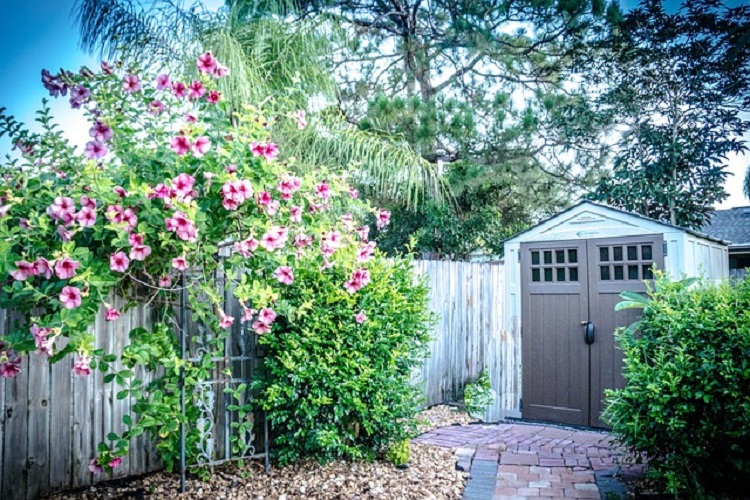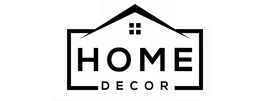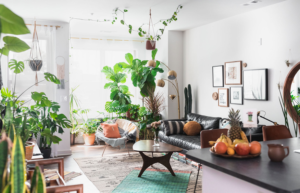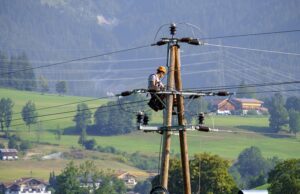How Can You Add Plumbing to Your Shed?
6 min read
Running water in your shed can greatly enhance its convenience, regardless if you plan to use it as a workshop, gardening space, or guesthouse.
In this blog post, we will explore the essential steps to add plumbing to a shed provided to you by professional plumbers.
So, without further ado, let’s dive in.
Decide On The Water Supply Type You Need
Before you start anything related to your new plumbing, it’s crucial that you decide on the water supply type best suited for your needs.
There are usually two options to choose from, each having its own set of pros and cons:
- A direct water connection from your main supply;
- A standalone water tank system.
If you have access to the main water line, connecting your shed to it is the most logical option. With a direct connection, you will always have sufficient water flow and no storage limitations.
However, it is costly, and you will always depend on the main water supply. Plus, if the water in your main supply is of poor quality, then so will the that in your shed.
On the other hand, a standalone water tank system works best if your shed is far from your main water line.
This option allows you to monitor and control your water usage, thus potentially conserving water. You should also know that standalone water tanks have limited storage capacity and require regular maintenance.
Check Zoning And Planning Rules
Different regions may have specific regulations and restrictions regarding plumbing installations in sheds, so you must know the ones in your area.
Examples of such rules and regulations can be the minimum distance between the shed and property boundaries, water usage restrictions if the shed plumbing is connected to the main supply, environmental considerations, etc.
It’s best to contact your local building department or consult with a professional who understands these rules and regulations.
Consider the Needed Insulation
Proper insulation protects your pipes from freezing and bursting during winter and helps your pipers maintain proper water flow.
Consider using pipe sleeves, insulation tape, or foam insulation to insulate your plumbing system effectively. These materials help maintain consistent temperatures inside the pipes, safeguarding them against external climate variations.
Additionally, insulating the walls and ceiling of your shed can further protect the plumbing system from extreme temperatures.
Still, the best precaution against water freezing is to install a water shut-off valve on the pipes connecting the shed’s plumbing line to the main supply. This will allow you to stop the water supply to the shed when it’s extremely cold and drain the water so it won’t freeze.
Dig a Trench and Lay the Pipes
Your new pipes should be placed at least 350mm from other services such as gas, electricity, and cable TV. Take your time to locate them before digging. The new pipes should also be installed below the frost line, typically requiring a minimum depth of 750mm.
Line the bottom of the trench with the builder’s sand, as it will create a soft base for the pipes and prevent damage from sharp stones. 25mm blue plastic pipe is commonly used for the pipes themselves and can be found at your local DIY store. It’s essential to properly insulate any areas where the pipes surface to protect them from the cold.
When it comes to connecting the pipes at either end, it’s best to leave that job to a professional plumber who can ensure proper installation and avoid any potential issues.
Choose an Appropriate Drainage Solution
If your shed is close enough to your house, then connect it to the main drainage. This is the most optimal and long-lasting solution, especially if you plan on using a significant amount of water in the shed.
If you do so, you can run your wastewater pipe in the same trench as your water supply pipe.
Standard drainage pipe sizes are typically 110mm and 160mm, but it’s always best to consult with a plumber to determine the appropriate size based on your specific requirements. It’s important to note that if your shed is situated below the level of the existing drains, you’ll need a domestic pumping station, which will require a power supply.
Alternatively, if connecting to the mains drainage is not feasible, there are off-grid solutions. One such option is a septic tank, which functions as a self-contained waste treatment system.
However, septic tanks can be expensive, so you should only use one if it’s impossible to connect to the main water supply or if you plan to install a toilet in the shed.
For those who won’t need a significant amount of water, a simpler alternative is a soakaway. A soakaway involves digging a hole in the ground and filling it with rubble and coarse stone, which allows surface water to seep back into the earth gradually.
However, it’s important to note that soakaways may not work effectively in heavily clay-based soils.
Important: When designing the drainage system, incorporate features such as drain traps and vents to prevent foul odours and maintain proper airflow. Properly sized drainage pipes and strategically placed cleanouts will ensure efficient flow and easy system maintenance.
Connect an Electrical Supply If Needed
Depending on how you plan to use your shed, you may need to connect an electrical supply to power your lighting and power tools. If you’re unfamiliar with electrical work, it’s best to hire a licensed electrician who can do the job properly and safely.
Determine the number of outlets and their locations and plan the routing of the electrical wiring. Consider installing a dedicated circuit just for your shed to prevent potential overloading and tripped breakers.
Remember to install ground fault circuit interrupters (GFCIs) where water and electricity may come in contacts, such as near sinks or outdoor outlets. GFCIs provide additional protection against electrical shocks and are a great safety measure.
Alternatively, you can go eco-friendly and generate your own electricity. This is a viable solution if you require power only for occasional lighting or to charge your electronics. The two main options for self-generation are solar power and wind power.
Both systems store energy in a battery that can be used to power your shed’s appliances. Not only does this offer long-term cost savings, but it also reduces your environmental impact.
Create Alternatives For Water Collection
In addition to connecting your shed to a water supply, alternative water collection methods to supplement your plumbing system is always worth considering. Rainwater harvesting, for example, is an eco-friendly solution providing water for non-potable uses such as gardening or cleaning.
You need to install gutters and downspouts on your shed’s roof so the rainwater will go into a storage tank or barrel. Always filter the collected rainwater to remove debris and sediment before use. This approach reduces your reliance on the main water supply and helps conserve water resources.
Conclusion
Installing plumbing in your shed opens up a world of possibilities, transforming it into a versatile and functional space.
You can ensure a successful installation that meets your needs by carefully considering the water supply type, zoning rules, insulation, drainage solutions, electrical supply, and alternative water collection methods.
Remember to consult professionals, adhere to local regulations, and prioritise safety throughout the process. With proper planning and execution, you’ll enjoy the convenience and efficiency that a well-designed plumbing system brings to your shed.
So create the perfect oasis in your shed and make the most of your versatile outdoor sp







